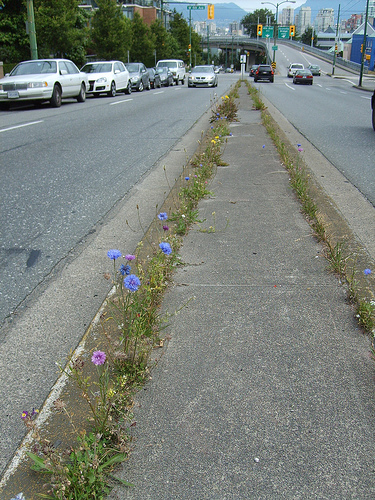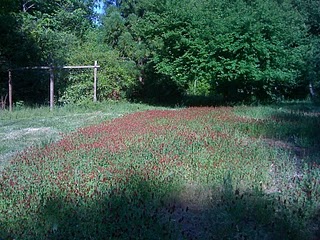
When seed balls will work (or fail)
 Like many other oft-mentioned
permaculture methods, I have a gut feeling
that seed
balls work better on
paper than in reality. In my neck
of the woods, at least, weeds grow very fast, and a seed ball tossed
into an abandoned lot isn't going to make any headway against the
blackberry brambles and goldenrod. Anything except the very
lowest maintenance plants are also going to suffer from lack of
nutrients.
Like many other oft-mentioned
permaculture methods, I have a gut feeling
that seed
balls work better on
paper than in reality. In my neck
of the woods, at least, weeds grow very fast, and a seed ball tossed
into an abandoned lot isn't going to make any headway against the
blackberry brambles and goldenrod. Anything except the very
lowest maintenance plants are also going to suffer from lack of
nutrients.
That said, I think that
seed balls can be successful in very select
environments. If you run across an area in the city where all of
the topsoil has been bulldozed away and the ground is bare, seed balls
of clover will probably be quite helpful. And if you've harvested
one
planting in a low-weed garden environment and want to start another
without disturbing the soil, you
might also have luck with seed balls.
Seed balls are most
appropriate for very low maintenance crops, so you'll be best off  choosing from these options:
choosing from these options:
- Wildflower mixtures are a favorite of urban guerrilla gardeners.
- Weedy dynamic accumulators are useful in degraded urban environments.
- Grain and clover mixtures are appropriate for do-nothing grain plantings as long as the ground is pretty much weed-free.
For my first experiment,
I chose to focus on the third option. I haven't had very much
experience with seed balls yet, though, so I hope those of you who have
experimented more will chime in and tell me about your successes and
failures.
| This post is part of our Seed Ball lunchtime series.
Read all of the entries: |
Want more in-depth information? Browse through our books.
Or explore more posts by date or by subject.
About us: Anna Hess and Mark Hamilton spent over a decade living self-sufficiently in the mountains of Virginia before moving north to start over from scratch in the foothills of Ohio. They've experimented with permaculture, no-till gardening, trailersteading, home-based microbusinesses and much more, writing about their adventures in both blogs and books.
Want to be notified when new comments are posted on this page? Click on the RSS button after you add a comment to subscribe to the comment feed, or simply check the box beside "email replies to me" while writing your comment.
